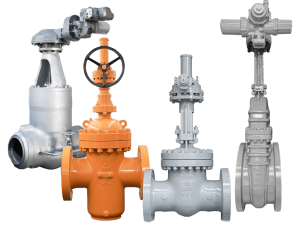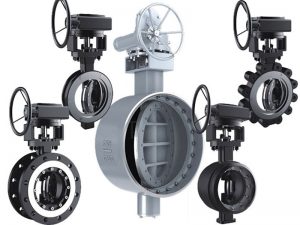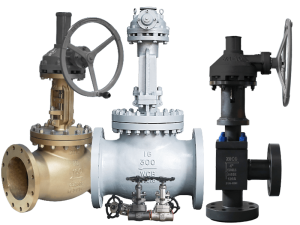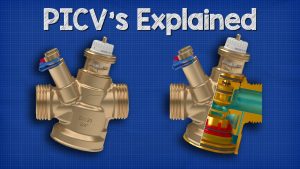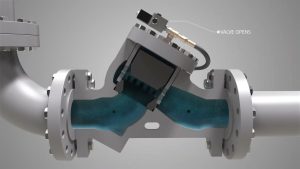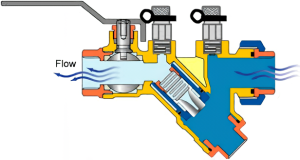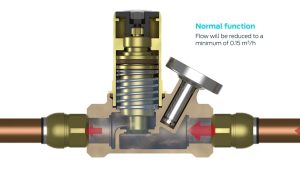Table of contents
- What is The Gate Valve?
- What Makes Gate Valves Different?
- How Do Gate Valves Actually Work?
- Rising Stem vs Non-Rising Stem: Which is Better?
- Metal Seated vs Resilient Seated: The Great Debate
- When Should You Use Gate Valves?
- Common Gate Valve Problems (And How to Avoid Them)
- Installation Best Practices
- Maintenance That Actually Matters
- Selecting the Right Gate Valve
- The Future of Gate Valves
- Bottom Line
What is The Gate Valve?
What is the gate valve? It’s one of the most common industrial valves used to completely open or close fluid flow in pipelines. Gate valves work by lifting a wedge-shaped barrier (called a gate) straight up out of the flow path, creating an unobstructed passageway when fully open.
Here’s the thing:
Gate valves are EVERYWHERE. From the water main under your street to massive oil pipelines, these workhorses keep fluids flowing (or stopped) exactly when needed.
And in this guide, I’m going to show you everything you need to know about the gate valve.
Including:
- How gate valves actually work
- Different types and when to use each
- Key advantages and disadvantages
- Installation and maintenance tips
- Common applications
Let’s dive right in.
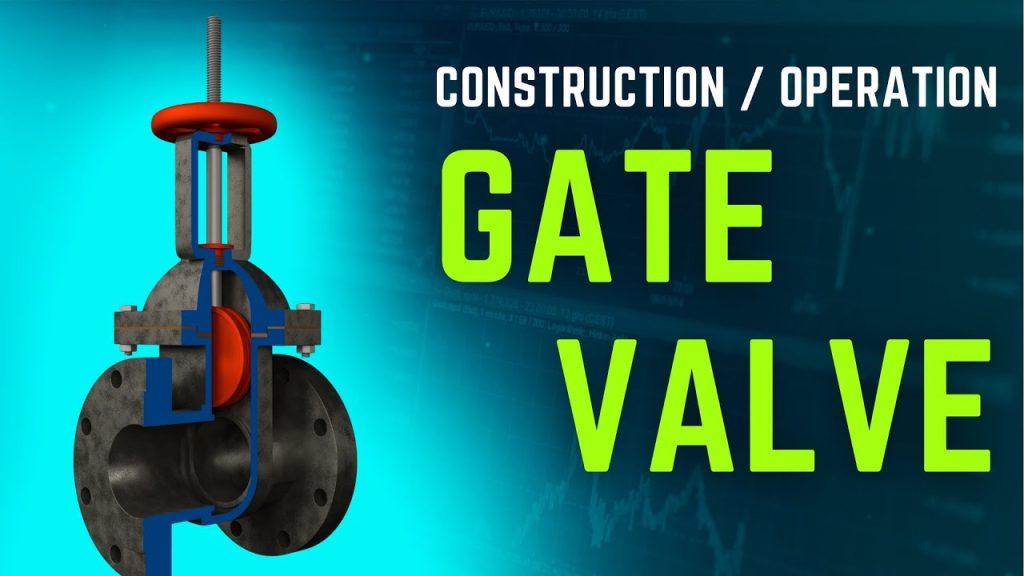
What Makes Gate Valves Different?
Gate valves are unique because they’re designed for one specific job: fully open or fully closed operation.
Think of it like a garage door. You either want it all the way up or all the way down. You wouldn’t leave it halfway open (unless you want problems).
Same deal with gate valves.
When I first started working with industrial valves, I made the rookie mistake of trying to use a gate valve for throttling. Big mistake. The valve started vibrating like crazy and wore out in months instead of years.
Here’s what makes gate valves special:
Straight-through flow path: When fully open, the fluid flows straight through with minimal resistance. No twists, turns, or obstructions.
Low pressure drop: Because of that straight path, you lose very little pressure across the valve. This saves energy and reduces pumping costs.
Bidirectional sealing: Most gate valves seal equally well in both flow directions.
Full bore design: The valve opening matches the pipe diameter, so there’s no flow restriction.
How Do Gate Valves Actually Work?
The operation is surprisingly simple:
- You turn the handwheel (or actuator)
- The stem rotates and moves the gate up or down
- The gate slides between the body seats
- In the closed position, the gate wedges tightly against the seats to stop flow
But here’s where it gets interesting:
The gate itself can be different designs. And these differences matter A LOT for performance and longevity.
Types of Gate Designs
Solid wedge gates are the simplest. One solid piece of metal shaped like a wedge. They’re tough and handle high temperatures well, but require precise machining.
Flexible wedge gates have a cut through the center, allowing slight flexing. This helps them seal better when there’s thermal expansion or pipeline stress.
Split wedge gates (also called parallel gates) use two separate pieces. They self-adjust to seal evenly, which is great for high-pressure applications.
The type you choose depends on your specific application. More on that later.
Rising Stem vs Non-Rising Stem: Which is Better?
This is one of the biggest decisions when selecting a gate valve.
And there’s no universal “better” option. It depends on your specific needs.
Rising Stem Gate Valves
With rising stem designs, the stem moves up and down as you operate the valve.
Advantages:
- Visual position indicator (you can see if it’s open or closed)
- Stem threads stay outside the fluid
- Better for corrosive services
- Easier to lubricate
Disadvantages:
- Need more vertical clearance
- Not suitable for underground installation
- More expensive
Non-Rising Stem Gate Valves
The stem stays in the same position and the gate travels up and down on the threads.
Advantages:
- Compact design
- Perfect for limited space
- Ideal for underground service
- Less expensive
Disadvantages:
- Can’t see valve position easily
- Stem threads exposed to fluid
- Not great for corrosive media
I’ve seen too many people choose the wrong type and regret it later.
For example, a water treatment plant I consulted for installed rising stem valves in their underground vault. They had to rebuild the entire vault to accommodate the stem travel. Expensive mistake.
Metal Seated vs Resilient Seated: The Great Debate
Here’s another critical choice that impacts performance and longevity.
Metal Seated Gate Valves
These use metal-to-metal contact between the gate and seats.
They’re the traditional choice for:
- High temperature applications
- Steam service
- Abrasive fluids
- Where fire-safe design is required
But they have one major weakness:
The dreaded “wire drawing” effect. If you try to throttle with a metal seated valve, high-velocity flow erodes channels in the seating surfaces. Once this happens, the valve never seals properly again.
Resilient Seated Gate Valves
These valves have the gate covered with rubber or elastomer material.
Game-changing advantages:
- Bubble-tight shutoff
- No valve pocket to trap sediment
- Lower operating torque
- More forgiving of pipeline debris
The tradeoff? Temperature limitations. Most resilient seated valves max out around 150°F (65°C).
For water distribution systems, resilient seated valves are almost always the better choice. They last longer and seal better in typical water service.
When Should You Use Gate Valves?
Gate valves excel in specific situations:
Perfect for:
- On/off isolation service
- Infrequent operation
- Where low pressure drop matters
- Slurry or viscous fluid service
- When pigging is required
- Large diameter pipelines
Avoid them for:
- Throttling or flow control
- Frequent operation
- Emergency shutoff (too slow)
- Clean instrument air systems
Let me share a real example:
A chemical plant was using gate valves for flow control in their cooling water system. The valves failed every 6 months from erosion. We replaced them with globe valves designed for throttling. Problem solved.
Common Gate Valve Problems (And How to Avoid Them)
After working with thousands of valves, I’ve seen every failure mode imaginable.
Here are the most common issues:
1. Stuck in Position
Cause: Corrosion, scale buildup, or lack of operation
Solution: Exercise valves quarterly, even if not needed for process
2. Leaking Through Seat
Cause: Damaged seating surfaces from throttling or debris
Solution: Never throttle with gate valves, install strainers upstream
3. Stem Packing Leaks
Cause: Worn packing, improper adjustment
Solution: Regular packing adjustment, upgrade to modern packing materials
4. Difficult to Operate
Cause: Excessive system pressure, corroded stems
Solution: Ensure valve is suitable for pressure class, maintain regularly
Installation Best Practices
Proper installation prevents 90% of valve problems.
Here’s my proven installation checklist:
- Check valve orientation – While most gate valves work in any position, some have preferred orientations
- Pipeline cleanliness – Flush lines before installation to remove debris
- Proper support – Large valves need independent support, not just pipe hangers
- Gasket selection – Use compatible gasket materials for your service
- Bolt tightening – Follow proper sequence and torque values
- Initial operation – Cycle valve fully before putting in service
One more critical tip:
Never force a valve that’s hard to operate. I’ve seen too many damaged valves from someone putting a cheater bar on the handwheel. If it’s that hard to turn, something’s wrong.
Maintenance That Actually Matters
Most valve maintenance programs are overkill.
Here’s what actually makes a difference:
Quarterly:
- Operate valve through full cycle
- Check for external leaks
- Verify smooth operation
Annually:
- Adjust packing if needed
- Lubricate exposed stem threads (rising stem)
- Check flange bolts for looseness
As Needed:
- Replace packing when adjustment no longer stops leaks
- Service actuators per manufacturer recommendations
The key is consistency. A simple maintenance program done regularly beats an elaborate program done sporadically.
Selecting the Right Gate Valve
With hundreds of options available, selection can seem overwhelming.
Here’s my simplified selection process:
Step 1: Define your service
- Fluid type
- Temperature range
- Pressure rating
- Frequency of operation
Step 2: Choose configuration
- Rising vs non-rising stem
- Metal vs resilient seated
- Connection type (flanged, threaded, welded)
Step 3: Select materials
- Body material for corrosion resistance
- Trim materials for wear resistance
- Gasket and packing compatibility
Step 4: Size properly
- Match pipe size (don’t reduce)
- Verify pressure class
- Consider future flow requirements
The Future of Gate Valves
Even though gate valves are one of the oldest valve designs, innovation continues.
Recent developments include:
- Smart actuators with position feedback
- Advanced coating technologies
- Improved seat designs for zero leakage
- Lightweight composite materials
But the fundamental principle remains unchanged: a simple, reliable way to stop or allow flow.
Bottom Line
So, what is the gate valve? It’s the workhorse of fluid control – a time-tested design that provides reliable on/off service in countless applications. When selected and used properly, gate valves deliver years of trouble-free service.
The key is understanding their strengths and limitations. Use them for isolation, not control. Maintain them regularly. Choose the right type for your application.
Do that, and your gate valves will outlast most other equipment in your facility.
Remember: gate valves are designed for one thing – fully open or fully closed service. Respect that design intent, and they’ll serve you well for decades.


